 W
WThe varieties of Arabic, a Semitic language within the Afroasiatic family originating in the Arabian Peninsula, are the linguistic systems that Arabic speakers speak natively. There are considerable variations from region to region, with degrees of mutual intelligibility. Many aspects of the variability attested to in these modern variants can be found in the ancient Arabic dialects in the peninsula. Likewise, many of the features that characterize the various modern variants can be attributed to the original settler dialects. Some organizations, such as Ethnologue and the International Organization for Standardization, consider these approximately 30 different varieties to be different languages, while others, such as the Library of Congress, consider them all to be dialects of Arabic.
 W
WAlgerian Arabic is a dialect derived from the form of Arabic spoken in northern Algeria. It belongs to the Maghrebi Arabic language continuum and is partially mutually intelligible with Tunisian and Moroccan.
 W
WAlgerian Saharan Arabic is a variety of Arabic indigenous to and spoken predominantly in the Algerian Sahara. Its ISO 639-3 language code is "aao," and it belongs to Maghrebi Arabic.
 W
WAndalusian Arabic, also known as Andalusi Arabic, was a variety or varieties of Arabic spoken in Al-Andalus, the regions of the Iberian Peninsula under Muslim rule from the 9th century to the 17th century. It became an extinct language in Iberia after the expulsion of the former Hispanic Muslims, which took place over a century after the Granada War by the Catholic Monarchs of Spain. Once widely spoken in Iberia, the expulsions and persecutions of Arabic speakers caused an abrupt end to the language's use on the peninsula. Its use continued to some degree in North Africa after the expulsion, although Andalusi speakers were rapidly assimilated by the Maghrebi communities to which they fled.
 W
WArabization or Arabisation describes both the process of growing Arab influence on non-Arab populations, causing a language shift by their gradual adoption of the Arabic language and their incorporation of the culture, as well as the Arab nationalist policies of some governments in modern Arab countries toward non-Arab minorities, including Lebanon, Kuwait, Iraq, Syria, Sudan, Mauritania, Algeria, Libya, and the Islamic State of Iraq and the Levant.
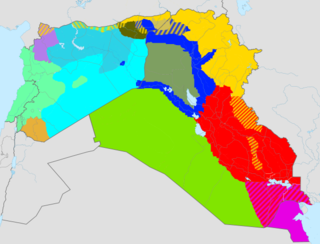 W
WBaghdadi Arabic is the Arabic dialect spoken in Baghdad, the capital of Iraq. During the last century, Baghdadi Arabic has become the lingua franca of Iraq, and the language of commerce and education. It is considered a subset of Iraqi Arabic.
 W
WCentral Asian Arabic or Jugari Arabic is a variety of Arabic currently facing extinction and spoken predominantly by Arab communities living in portions of Central Asia.
 W
WChadian Arabic is one of the regional colloquial varieties of Arabic and is the first language of some 1.6 million people, both town dwellers and nomadic cattle herders. Although Chad borders 2 Arab countries in the north and eastern parts of the country, the majority of its speakers live in southern Chad. Its range is an east-to-west oval in the Sahel, about 1,400 miles (2,300 km) long by 300 miles (480 km) north-to-south. Nearly all of this territory is within Chad or Sudan. It is also spoken elsewhere in the vicinity of Lake Chad in the countries of Cameroon, Nigeria, Niger. Finally, it is spoken in slivers of the Central African Republic and South Sudan. In addition, this language serves as a lingua franca in much of the region. In most of its range, it is one of several local languages and often not among the major ones.
 W
WClassical Arabic or High or Quranic Arabic is the standardized literary form of the Arabic language used from the 7th century and throughout the Middle Ages, most notably in Umayyad and Abbasid literary texts, such as poetry, elevated prose, and oratory, and is also the liturgical language of Islam.
 W
WCypriot Arabic, also known as Cypriot Maronite Arabic or Sanna, is a moribund variety of Arabic spoken by the Maronite community of Cyprus. Formerly speakers were mostly situated in Kormakitis, but following the Turkish invasion of Cyprus in 1974, the majority relocated to the south and spread, leading to the decline of the language. Traditionally bilingual in Cypriot Greek, as of some time prior to 2000, all remaining speakers of Cypriot Arabic were over 30 years of age. A 2011 census reported that, of the 3,656 Maronite Cypriots in Republic of Cyprus-controlled areas, none declared Cypriot Arabic as their first language.
 W
WDadanitic is the script and possibly the language of the oasis of Dadān and the kingdom of Liḥyān in northwestern Arabia, spoken probably some time during the second half of the first millennium BCE.
 W
WDamascus Arabic or Damascus Dialect is a North Levantine Arabic spoken dialect, indigenous to and spoken primarily in Damascus. As the dialect of the capital city of Syria, and due to its use in the Syrian broadcast media, it is prestigious and widely recognized by speakers of other Syrian dialects, as well as in Lebanon, Palestine, and Jordan. Accordingly, in modern times it is sometimes known as Syrian Arabic or the Syrian Dialect; however, the former term may also be used to refer to the group of similar urban sedentary dialects of the Levant, or to mean Levantine Arabic in general.
 W
WEgyptian Arabic, locally known as Colloquial Egyptian, or simply Masri (مَصرى), is the spoken vernacular Arabic dialect of Egypt.
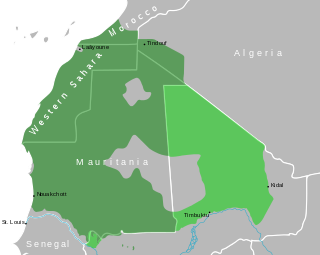 W
WHassānīya is a variety of Maghrebi Arabic spoken by Mauritanian Arab-Berbers and the Sahrawi. It was spoken by the Beni Ḥassān Bedouin tribes, who extended their authority over most of Mauritania and Morocco's southeastern and Western Sahara between the 15th and 17th centuries. Hassaniya Arabic was the language spoken in the pre-modern region around Chinguetti.
 W
WHejazi Arabic or Hijazi Arabic, also known as West Arabian Arabic, is a variety of Arabic spoken in the Hejaz region in Saudi Arabia. Strictly speaking, there are two main groups of dialects spoken in the Hejaz region, one by the urban population, originally spoken mainly in the cities of Jeddah, Mecca and Medina and another by the urbanized rural and bedouin populations. However, the term most often applies to the urban variety which is discussed in this article.
 W
WHismaic is a variety of the Ancient North Arabian script and the language most commonly expressed in it. The Hismaic script may have been used to write Safaitic dialects of Old Arabic, but the language of most inscriptions differs from Safaitic in a few important respects, meriting its classification as a separate dialect or language. Hismaic inscriptions are attested in the Ḥismā region of Northwest Arabia, dating to the centuries around and immediately following the start of the Common Era.
 W
WJordanian Arabic is a dialect continuum of mutually intelligible varieties of Levantine Arabic spoken by the population of the Hashemite Kingdom of Jordan. Together with Palestinian Arabic, it has the ISO 639-3 language code "ajp", known as South Levantine Arabic.
 W
WKhuzestani Arabic is a dialect of Gelet (Southern) Mesopotamian Arabic spoken by the Iranian Arabs in Khuzestan Province of Iran. It is also considered by most contemporary scholars to be a mix of Southern Mesopotamian Arabic and Gulf Arabic spoken in places such as Kuwait and Eastern Arabia. It has had a long history of contact with Persian language, leading to several changes. The main changes are in word order, noun–noun and noun–adjective attribution constructions, definiteness marking, complement clauses, and discourse markers and connectors.
 W
WLebanese Arabic, or simply Lebanese, is a variety of North Levantine Arabic, indigenous to and spoken primarily in Lebanon, with significant linguistic influences borrowed from other Middle Eastern and European languages and is in some ways unique from other varieties of Arabic. Due to multilingualism and pervasive diglossia among Lebanese people, it is not uncommon for Lebanese people to code-switch between or mix Lebanese Arabic, English, and French in their daily speech.
 W
WLibyan Arabic is a variety of Arabic spoken mainly in Libya, and neighboring countries. It can be divided into two major dialect areas; the eastern centred in Benghazi and Bayda, and the western centred in Tripoli and Misrata. The Eastern variety extends beyond the borders to the east and share the same dialect with far Western Egypt. A distinctive southern variety, centered on Sabha, also exists and is more akin to the western variety. Another Southern dialect is also shared along the borders with Niger.
 W
WMaghrebi Arabic is a vernacular Arabic dialect continuum spoken in the Maghreb region, in Morocco, Algeria, Tunisia, Libya, Western Sahara, and Mauritania. It includes Moroccan, Algerian, Tunisian, Libyan, and Hassaniya Arabic. Speakers of Maghrebi Arabic are primarily Arab-Berbers who call their language Derdja, Derja, Derija or Darija. This serves to differentiate the spoken vernacular from Standard Arabic. The Maltese language is believed to be derived from Siculo-Arabic and ultimately from Tunisian Arabic, as it contains some typical Maghrebi Arabic areal characteristics.
 W
WMesopotamian Arabic, also known as Iraqi Arabic, is a continuum of mutually-intelligible varieties of Arabic native to the Mesopotamian basin of Iraq as well as spanning into Syria, Iran, southeastern Turkey, and spoken in Iraqi diaspora communities.
 W
WModern Standard Arabic (MSA), or Modern Written Arabic, is a term used mostly by Western linguists to refer to the variety of standardized, literary Arabic that developed in the Arab world in the late 19th and early 20th centuries. It is the language used in academia, print and mass media, law and legislation, though it is generally not spoken as a mother tongue, similar to Classical Latin or the literary register of French. MSA is a pluricentric standard language taught throughout the Arab world in formal education. It differs significantly from many vernacular varieties of Arabic that are commonly spoken as mother tongues in the area; these are only partially mutually intelligible with both MSA and with each other depending on their proximity in the Arabic dialect continuum.
 W
WMoroccan Arabic, known as Darija in Morocco, is a form of vernacular Arabic spoken in Morocco. It is part of the Maghrebi Arabic dialect continuum, and as such is mutually intelligible to some extent with Algerian Arabic and to a lesser extent with Tunisian Arabic. It has been heavily influenced mainly by the Berber languages and to a lesser extent by Latin, Punic, French, and Spanish.
 W
WNajdi Arabic is the group of Arabic varieties originating from the Najd region of Saudi Arabia. As a result of migration, several regions outside of Najd, including Eastern, Al Jawf, Najran, and Northern Borders Regions are now mostly Najdi-speaking. Outside of Saudi Arabia, it is also the main Arabic variety spoken in the Syrian Desert of Iraq, Jordan, and Syria as well as the westernmost part of Kuwait.
 W
WNorth Levantine Arabic is a subdivision of Levantine Arabic, a variety of Arabic. It stems from the north in Turkey, specifically in the coastal regions of the Adana, Hatay, and Mersin provinces, to Lebanon, passing through the Mediterranean coastal regions of Syria as well as the areas surrounding Aleppo and Damascus. It is also known as Syro-Lebanese Arabic, though that term is sometimes used to mean all of Levantine Arabic.
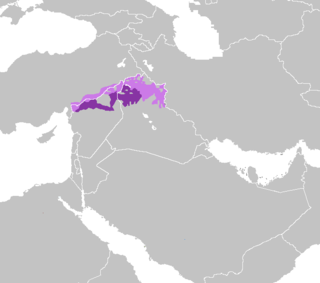 W
WNorth Mesopotamian Arabic is a variety of Mesopotamian Arabic spoken north of the Hamrin Mountains in Iraq, in western Iran, northern Syria, and in southeastern Turkey. The peripheral Turkish varieties in Siirt, Muş and Batman are quite divergent. Like other Mesopotamian Arabic varieties and Levantine Arabic, it shows signs of an Aramaic substrate.
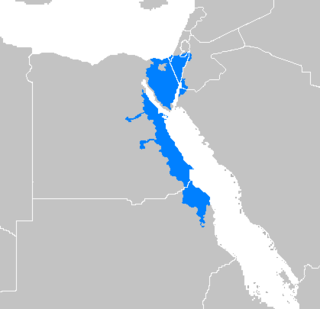 W
WNorthwest Arabian Arabic is a proposed subfamily of Arabic encompassing the traditional dialects of the Sinai Peninsula, the Eastern Desert, the Negev, southern Jordan, and the northwestern corner of Saudi Arabia.
 W
WOld Arabic is a term for pre-Islamic Arabic dialects and languages of the Southern Levant and North Arabia which were written in many ancient writing scripts such as Safaitic, Hismaic, Nabatean, Dadanitic, and Greek.
 W
WOld Hijazi, or Old Higazi, is a variety of Old Arabic attested in Hejaz the western part of Saudi Arabia from about the 1st century to the 7th century. It is the variety thought to underlie the Quranic Consonantal Text (QCT) and in its later iteration was the prestige spoken and written register of Arabic in the Umayyad Caliphate.
 W
WPalestinian Arabic is a dialect continuum of mutually intelligible varieties of Levantine Arabic spoken by most Palestinians in Palestine, Israel and in the Palestinian diaspora populations. Together with Jordanian Arabic, it has the ISO 639-3 language code "ajp", known as South Levantine Arabic.
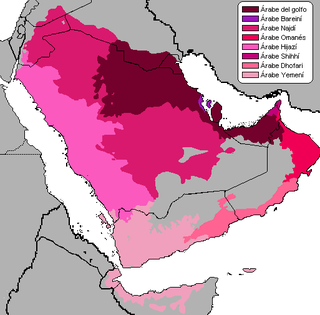 W
WPeninsular Arabic, or Southern Arabic, are the varieties of Arabic spoken throughout the Arabian Peninsula. This includes the countries of Saudi Arabia, Yemen, Oman, United Arab Emirates, Kuwait, Bahrain, Qatar, Southern Iran and the tribal people of Jordan.
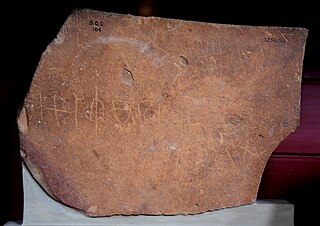 W
WSafaitic is a variety of the South Semitic script used by the nomads of the basalt desert of southern Syria and northern Jordan, the so-called Ḥarrah, to carve rock inscriptions in various dialects of Old Arabic and Ancient North Arabian. The Safaitic script is a member of the Ancient North Arabian (ANA) sub-grouping of the South Semitic script family, the genetic unity of which has yet to be demonstrated.
 W
WṢaʽīdi Arabic, also known as Upper Egyptian Arabic, is a variety of Arabic spoken by the Ṣaʽīdi people in Upper Egypt, a strip of land on both sides of the Nile river that extends between Nubia and downriver (northwards) to Lower Egypt. It shares linguistic features with both Egyptian Arabic and the Quran's Classical Arabic. Dialects include Middle and Upper Egyptian Arabic.
 W
WSouth Levantine, a subdivision of Levantine Arabic, is spoken predominantly in Palestine, as well as in the western area of Jordan .As well as in Israel in the Northern District (Israel)
 W
WSudanese Arabic is the variety of Arabic spoken throughout Sudan and in parts of Eritrea. Some of the tribes in Sudan still have similar accents to the ones in Saudi Arabia.
 W
WTransliteration of Libyan placenames is the process of converting Libyan placenames written in the Arabic alphabet into the Latin alphabet. Libyan places have, in most cases no common English name, so when they are referred to, they need to be transliterated, from Libyan Arabic or Standard Arabic. Over the decades, many systems have been used result in locations, which thus have multiple transliterations in circulation.
 W
WTunisian Arabic, or simply Tunisian, is a set of dialects of Maghrebi Arabic spoken in Tunisia. It is known among its over 11 million speakers as: تونسي, romanized: Tounsi [ˈtuːnsi] (listen), "Tunisian" or Derja "everyday language" to distinguish it from Modern Standard Arabic, the official language of Tunisia. Tunisian Arabic is mostly similar to eastern Algerian Arabic and western Libyan Arabic.
 W
WWestern Morocco Arabic, Western Moroccan Arabic or ʿAroubi Arabic is a dialectal continuum of Hilalian Arabic, mainly spoken in the plains of western and central-western plains of Morocco.
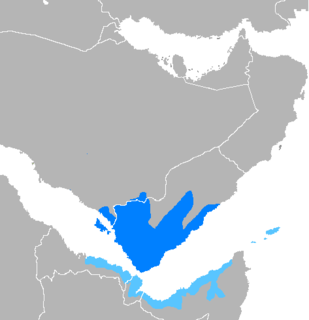 W
WYemeni Arabic is a cluster of varieties of Arabic spoken in Yemen, southwestern Saudi Arabia, Somaliland, and Djibouti. It is generally considered a very conservative dialect cluster, having many classical features not found across most of the Arabic-speaking world.